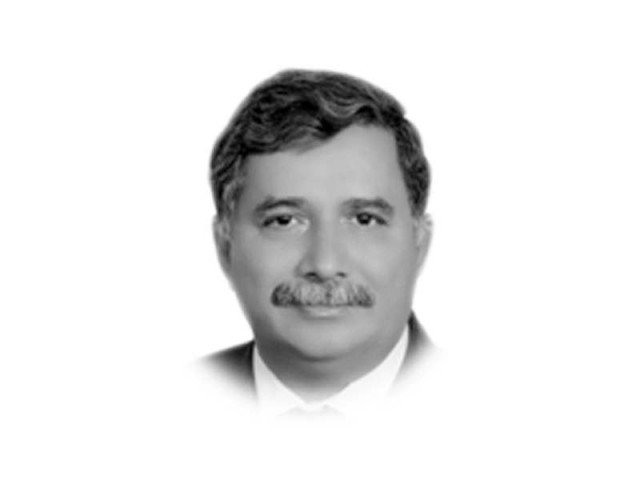New hopes for Pak-Afghan relations in 2019
Afghanistan is an important component of ethnic identities present in Pakistan

The writer is a former IG and Secretary Home and Tribal Affairs government of Khyber-Pakhtunkhwa and heads Good Governance Forum. He can be reached at aashah7@yahoo.com
The Pak-Afghan relation can be seen in the light of three interrelated perspectives. The first one is, the historical sociocultural bondages of the people living across the borders of the two countries. The land of Afghanistan, throughout its history has impacted the socioeconomic life of the Indian subcontinent. Our people are connected not only through geography but also by common folklore, heroes, literature and entertainment. In fact, much of the recorded history of India emanated from Afghanistan as most of the dynasties that ruled India were of Afghan origin. Both sides have common poets, writers and philosophers like Sufi poet Jalaluddin Rumi Balkhi, Jamaluddin Afghani, Rehman Baba, Hamza Baba, Ghani Khan, Qalandar Momand and Suleman Layeq, to name a few. Not only poetry, but music also touches the same chords as Khyal Mohammad, Rafiq Shinwari, Ustad Shahwali, Qamar Gula, Gulnar Begum Sardar Ali Takkar, Naghma and Nashanas are equally popular on both sides of the Durand line. Anthropologically, the identity of most of the ethnicities living in Pakistan is of Central Asian origin, of which Afghanistan is the most important component. In terms of people-to-people contact, perhaps one positive example in the field of sports is the Afghan cricket team that has established its name among the leading cricket playing nations. The assistance in the field of coaching provided by Pakistani cricketers is the kind of assistance that should govern the Pak-Afghan relations in all walks of life.
While we mention positive attributes like chivalry and hospitality as cultural heritage, it is also important to point out that both countries share a dismal record in the area of gender equality and governance. Both Pakistan and Afghanistan regularly grab top positions whenever a ranking for poor governance or gender discrimination is carried out by international bodies. This even further necessitates candid acknowledgement of the deep-rooted shared problems and readiness for addressing such issues with clearer understanding, positive cooperation and mutual assistance.
The second important perspective is of the economic ties that have interwoven the two countries. Pakistan has remained Afghanistan’s largest trading partner until 2015 and the volume of trade remained to the tune of some $3 billion. But due to the growing political tensions between the two countries, the economic ties have also received a major brunt. Understanding and addressing challenges to the Pak-Afghan trade will also be helpful in establishing peace in the region. Both countries are bestowed with an abundance of natural resources and host some of the best scenic tourist spots in the world. These resources can be best utilised if Pak-Afghan relations are reconfigured along economic ties. Pakistan with its grand projects like CPEC can benefit fully if Afghanistan is also on board. Like many other regional economic groupings, such as, Nafta, EU, Asean, Pakistan and Afghanistan would benefit enormously if they cooperate in mutual trade. Unfortunately, this is a neglected area and has largely been left to political expediency.
The third perspective is of regional peace and stability which also determines progress and prosperity of the two nations. This has a wider role to play for peace, development and cooperation in the world especially in the context of South Asia. Intra-regional cooperation created catalytic impact in addressing the challenges of poverty, development and terrorism. Regional cooperation involved policy coordination through formal institutions for the welfare and for achieving collective vision for the development of the region. Both countries should be forthcoming in recognising the bitter fact that the policy of fomenting troubles by interfering in the internal affairs had only been mutually destructive. In the process both countries are engulfed by the spectres of radicalism and terrorism. The problem is a shared one and hence can only be remedied by mutual cooperation at the regional level. In the past efforts were made to tackle these problems, for instance the formation of Afghanistan-Pakistan Action Plan for Peace and Solidarity after meeting of the premiers of both countries earlier in 2018. However, the real breakthrough had recently been seen in the form of Taliban-US talks with positive contribution by Pakistan. It is hoped that this will also not prove a mirage like many earlier moves in the past. All sincere efforts should be made for establishing a peaceful and stable environment in Afghanistan which in turn would also be ideal for Pakistan in general and Pashtuns in particular.
There cannot not be two views that both sides stand at a crossroads of history. It is hoped that 2019 would be the year of peace in Afghanistan and Pakistan.
Published in The Express Tribune, January 4th, 2019.
Like Opinion & Editorial on Facebook, follow @ETOpEd on Twitter to receive all updates on all our daily pieces.













COMMENTS
Comments are moderated and generally will be posted if they are on-topic and not abusive.
For more information, please see our Comments FAQ